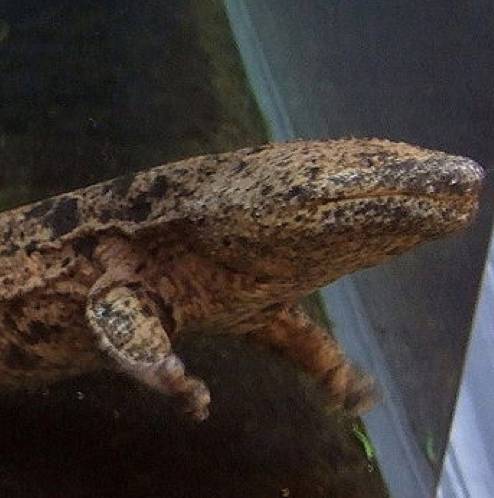Japanese Giant Salamander
Andrias japonicus
Online Biology Dictionary
|
|

|
|
Andrias japonicus Image: S. McCandlish. |
The Japanese Giant Salamander is the second largest amphibian. This permanently aquatic animal can reach lengths of 1.5 meters (~5 ft) and weigh 36 kg (~80 lbs). Only the similar Chinese Giant Salamander (Andrias davidianus), which has a longer tail, is bigger.
Once hunted as a delicacy, A. japonicus was formerly endangered. But now, due to recent conservation efforts, it's making a comeback, despite continuing fragmentation and destruction of its habitat. In particular, efforts to help these beleaguered behemoths get past dams have allowed them lay their eggs upstream and complete their reproductive cycle (see video, below left).
Habitat: Rocky upland streams and lakes with clear, well-oxygenated water, where these animals lurk in underwater hollows and cavities.
Geographic range: Japan, on the islands of Honshu amd Kyushu.
About Chinese Giant Salamanders >>
Most shared on Macroevolution.net:
Human Origins: Are we hybrids?
On the Origins of New Forms of Life
Mammalian Hybrids
Cat-rabbit Hybrids: Fact or fiction?
Famous Biologists
Dog-cow Hybrids
Prothero: A Rebuttal
Branches of Biology
Dog-fox Hybrids